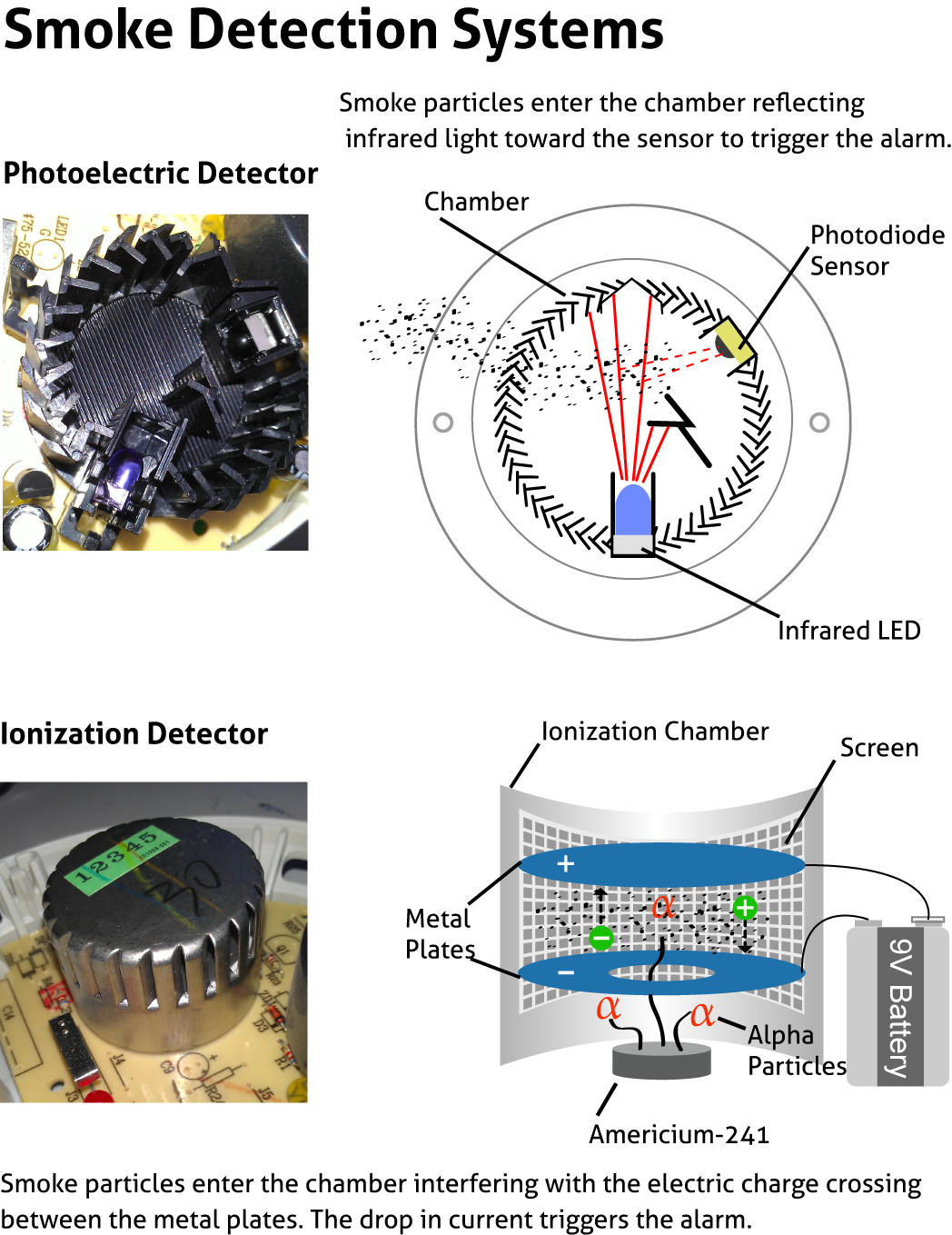- Publications:
- Newsletter:
- How-To Tutorials:
- Consumer Guides:
- Related:
Consumer Guides
Product Education

Fire & Smoke Detectors
A basic overview of the benefits and drawbacks of current smoke and fire detection technologies for the home.
Comparison Chart
Sources:
- Chart is based on
“Silent Alarms, Deadly Differences”, ASHI Reporter, June 2013
- Smoke Detector: Smoke Detector
- Ionization Detector: Ionization Detector
| Photoelectric | Ionization | |
|---|---|---|
| Pros | • Very effective for smoldering fires* • Very effective for synthetic materials fires • 15 to 50 minutes faster in a smoldering fire then ionization smoke alarm • Less prone to nuisance alarm • 4% failure rate |
• Cheaper cost • 30-90 seconds faster in fast flame fires* • Very sensitive for burnt toast |
| Cons | • Higher cost ($5 - $15 more that ionization smoke alarm) • Not sensitive for burnt toast |
• 55% failure rate • 15 to 50 minutes slower in a smoldering fire then photoelectric smoke alarm • Very prone to nuisance alarm • Not effective for synthetic materials fires |
* The vast majority of residential fire fatalities are due to smoke inhalation, not the actual flames.

Recalls
FEMA.gov Listing: Smoke Detector Recalls
U.S. Consumer Product Safety Commission: CPSC.gov Database





